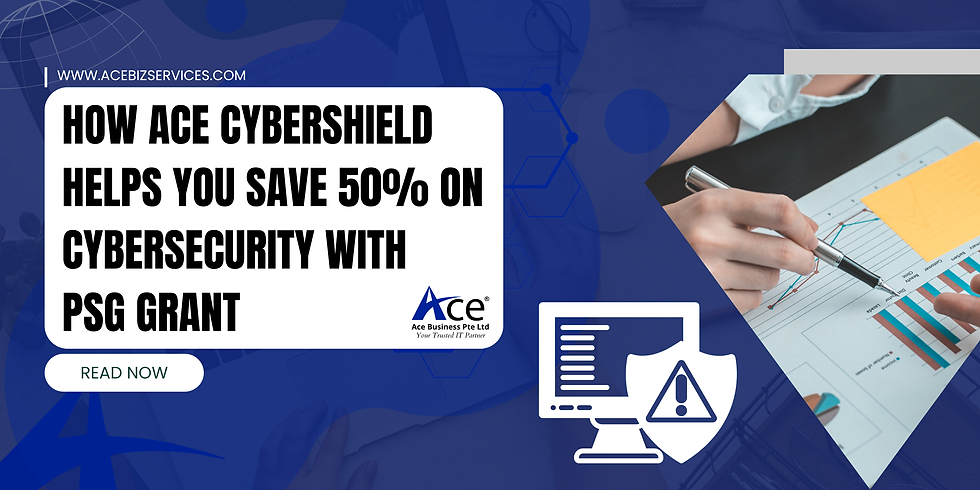Don't Get Hooked: Understanding Phishing and How to Protect Yourself
- ACE Team
- Jun 7, 2023
- 3 min read
Updated: Nov 17, 2023

Phishing has become one of the most common cyber attacks, with scammers constantly coming up with new techniques to trick individuals into revealing their personal information.
In this blog post, we will delve into what phishing is, how it works, and most importantly, how you can protect yourself from falling victim to this type of scam.
What is Phishing?
Phishing is a type of cyber attack where scammers use fraudulent emails, text messages, or websites to deceive individuals into revealing their sensitive information. This can include usernames, passwords, credit card numbers, and other personal details. The scammers often impersonate reputable organizations, such as banks, government agencies, or well-known companies, to gain the trust of their victims.
How Does Phishing Work?
Phishing attacks usually start with an email or a text message that appears to be from a trusted source. The message often contains urgent or alarming language, creating a sense of urgency and prompting the recipient to take immediate action. The scammers use various techniques to manipulate their victims, such as posing as a trusted individual, using fake logos or email addresses that resemble legitimate ones, and even creating fake websites that look identical to the real ones.
Once the victim clicks on a link or opens an attachment in the message, they are directed to a fake website that asks for their personal information. This information is then collected by the scammers and can be used for identity theft, financial fraud, or other malicious purposes.
How to Protect Yourself from Phishing:
Be Skeptical: Always be cautious when you receive an email or a text message that asks for your personal information, especially if it's from an unknown sender or contains urgent language. Double-check the sender's email address and verify the authenticity of the message before taking any action.
Don't Click on Suspicious Links: Avoid clicking on links or downloading attachments from emails or text messages that you weren't expecting, or that seem suspicious. Instead, go directly to the official website of the organization in question by typing the URL in your browser or using a bookmark.
Be Wary of Urgent Requests: Scammers often use urgency to pressure victims into providing their information without thinking rationally. If you receive an email or a text message that demands immediate action, take a step back and verify the authenticity of the request before taking any action.
Keep Your Software Up to Date: Make sure your operating system, web browser, and antivirus software are always updated to the latest version. This helps to protect against known vulnerabilities that scammers may exploit.
Enable Two-Factor Authentication: Two-factor authentication adds an extra layer of security to your online accounts by requiring an additional verification step, such as a fingerprint or a one-time code, in addition to your password. This makes it harder for scammers to access your accounts even if they have your password.
Educate Yourself and Others: Stay informed about the latest phishing techniques and share this knowledge with others, especially elderly family members, friends, or colleagues who may be more vulnerable to falling victim to phishing attacks.
Conclusion: Phishing attacks are a constant threat in the digital world, and it's important to be vigilant and take steps to protect yourself and your personal information. By being skeptical, avoiding suspicious links, keeping your software up to date, enabling two-factor authentication.
For IT support matters, contact us at care@acebizservices.com or you can also give us a call at 6262 0402!











Comments